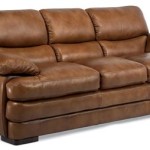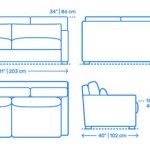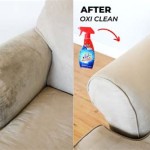Should I Scotchgard My Sofa? An In-Depth Look
The decision of whether or not to Scotchgard a sofa is one that many homeowners face. Scotchgard, a brand name for a fluoropolymer-based fabric protector, promises to repel liquids and prevent stains, ultimately extending the life and improving the appearance of upholstered furniture. While the prospect of a stain-resistant sofa is undoubtedly appealing, it's essential to weigh the potential benefits against the potential drawbacks before making a decision.
The application of Scotchgard creates a protective barrier on the fabric fibers, reducing their surface energy. This lowered surface energy causes liquids to bead up on the surface rather than immediately soaking in. This “beading” effect provides a crucial window of opportunity to blot up spills before they can penetrate and stain the fabric. This characteristic makes Scotchgard particularly attractive to households with children, pets, or those who frequently entertain.
However, the effectiveness of Scotchgard isn't absolute. Over time, the protective barrier can wear down due to friction, cleaning, and exposure to sunlight. Reapplication may be necessary to maintain the desired level of protection. Furthermore, Scotchgard doesn't render the sofa completely stain-proof. Highly pigmented liquids, such as red wine or coffee, can still leave a mark if not promptly addressed. The type of fabric also plays a significant role in how well Scotchgard performs.
Understanding the Benefits of Scotchgarding
The primary benefit of Scotchgarding a sofa is its stain-repellent properties. This is particularly valuable for light-colored sofas, which are more susceptible to visible staining. By preventing stains from setting in, Scotchgard can help maintain the aesthetic appeal of the furniture for a longer period. This is especially important considering the investment typically associated with purchasing a new sofa.
Beyond stain prevention, Scotchgard can also help to protect against general wear and tear. By reducing the absorption of moisture and dirt, it can minimize the likelihood of fabric degradation and fading. This is particularly beneficial for sofas that are frequently used or exposed to high levels of sunlight. The reduced absorption also translates to easier cleaning, as surface dirt and spills are less likely to bind to the fabric fibers.
Another notable benefit is the potential for extending the lifespan of the sofa. By protecting against stains and wear, Scotchgard can contribute to the overall longevity of the upholstery. This can save homeowners money in the long run by delaying the need for replacement or reupholstering. The cost of Scotchgard application, whether done professionally or as a DIY project, can be a worthwhile investment when considering the potential savings from avoiding premature wear and tear.
Examining the Potential Drawbacks of Scotchgarding
Despite its benefits, Scotchgarding is not without its potential drawbacks. One of the main concerns revolves around the chemicals used in the formulation. Historically, Scotchgard products contained perfluorooctane sulfonate (PFOS) and perfluorooctanoic acid (PFOA), both belonging to the class of per- and polyfluoroalkyl substances (PFAS). These chemicals were linked to environmental and health concerns, leading to their phase-out by the manufacturer.
Current Scotchgard formulations typically use alternative fluoropolymers that are considered safer. However, some concerns remain regarding the potential long-term effects of these newer chemicals. Individuals with sensitivities or allergies may experience adverse reactions to the chemicals in Scotchgard, particularly during the application process. Proper ventilation is crucial when applying Scotchgard to minimize exposure to airborne particles.
Another potential drawback is the cost of application. Professional Scotchgard application can be relatively expensive, especially for larger sofas. While DIY kits are available, they may not provide the same level of protection as a professional application. The quality of the application also plays a crucial role in the effectiveness of the treatment. Uneven or insufficient application can lead to inconsistent protection and increased susceptibility to staining.
Furthermore, Scotchgard can alter the feel or appearance of certain fabrics. Some fabrics may become slightly stiffer or more textured after application. While this change is often subtle, it can be noticeable, especially on softer or more delicate materials. It's advisable to test the product on an inconspicuous area of the sofa before applying it to the entire surface to ensure that the finish is acceptable.
Factors to Consider Before Applying Scotchgard
Before deciding to Scotchgard a sofa, it's crucial to consider several factors. The type of fabric is a primary consideration. Some fabrics, such as microfiber and tightly woven synthetics, are naturally more stain-resistant and may not require Scotchgard treatment. Others, like cotton, linen, and silk, are more porous and may benefit significantly from the added protection.
The age and condition of the sofa are also important factors. Applying Scotchgard to an old or worn sofa may not be worthwhile, as the fabric may already be damaged or degraded. In such cases, reupholstering may be a more cost-effective solution. For newer sofas, Scotchgard can help to maintain their pristine condition and extend their lifespan.
Lifestyle factors also play a significant role in the decision. Households with children or pets, or those who frequently entertain, may benefit more from Scotchgard protection than those with less activity. The frequency of use and the types of activities that take place on the sofa should be considered when weighing the potential benefits of Scotchgard.
Finally, it's essential to research and choose a reputable Scotchgard product or applicator. Look for products that are specifically designed for upholstery and that have been tested for safety and effectiveness. If opting for professional application, ensure that the applicator is experienced and uses high-quality products. Reading reviews and comparing prices can help to make an informed decision.
The application process itself, whether done professionally or as a DIY project, requires careful attention to detail. The sofa should be thoroughly cleaned and free of any existing stains or dirt before applying Scotchgard. The product should be applied evenly and according to the manufacturer's instructions. Adequate ventilation is essential during the application process to minimize exposure to fumes.
After application, it's important to allow the Scotchgard to dry completely before using the sofa. This may take several hours or even overnight, depending on the product and the environmental conditions. Once dry, the sofa should be vacuumed to remove any excess product or residue. Regular cleaning and maintenance are still necessary to keep the sofa looking its best, even after Scotchgard application.
In conclusion, the decision to Scotchgard a sofa is a personal one that depends on a variety of factors. By carefully considering the potential benefits, drawbacks, and factors discussed above, homeowners can make an informed decision that is right for their needs and circumstances. Weighing the pros and cons carefully can help ensure that the decision is one that protects the investment in the sofa and contributes to a more comfortable and enjoyable living space.

Scotchguard Your New Lounge And Furniture Age Carpet Cleaning

How To Scotchgard A Couch Or Any Upholstered Furniture Life Should Cost Less

How To Scotchgard A Couch Or Any Upholstered Furniture Life Should Cost Less

How To Scotchgard A Couch Or Any Upholstered Furniture Life Should Cost Less

How To Scotch Gard Your Couch

Scotchguard Your New Lounge And Furniture Age Carpet Cleaning

How Do You Keep Your Couches White With All Boys Noting Grace

How To Scotchgard A Couch Or Any Upholstered Furniture Life Should Cost Less

Is Scotchgard Safe And Necessary For Couch Toms Upholstery Cleaning Melbourne

Should You Scotchgard New Furniture Is It Toxic Fabric Protector Tips And Review For Couch








